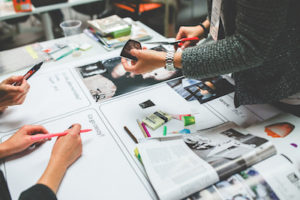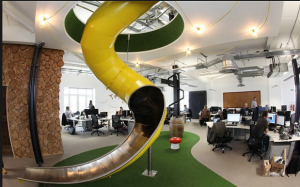 From the mailroom all the way to the C-suite, employees have developed an exceptional capacity for reading between the lines. The boss or the shareholders may say they want innovation, but the unspoken message may be, “but only if it’s risk-free.” If we want innovation, we have to tolerate risk, and we have to make it safe for our employees to take those risks. When corporate leaders make it clear in their words and actions that employees aren’t expected to be perfect–that “mistakes” are not only acceptable, but are indeed just part of the process of getting to winning ideas and products–then employees can relax in a way that supports their own creativity. And when employees get creative, innovations can happen.
From the mailroom all the way to the C-suite, employees have developed an exceptional capacity for reading between the lines. The boss or the shareholders may say they want innovation, but the unspoken message may be, “but only if it’s risk-free.” If we want innovation, we have to tolerate risk, and we have to make it safe for our employees to take those risks. When corporate leaders make it clear in their words and actions that employees aren’t expected to be perfect–that “mistakes” are not only acceptable, but are indeed just part of the process of getting to winning ideas and products–then employees can relax in a way that supports their own creativity. And when employees get creative, innovations can happen.
Cirque du Soleil, which reinvented the traditional slow-growth genre of the circus and in doing so became a multinational company with four thousand employees, twenty simultaneous shows running worldwide, and one hundred million spectators in less than twenty-five years, embraces risk taking and sees occasional failures as simply part of the creative process. In an interview, Lyn Herward, president of their Creative Content Division, explained that at Cirque du Soleil “employees are offered the protection and support that they need to take risks on the company’s behalf.” Successes and failures are seen as the result of a team effort, and this reduces the fear or shame that is associated with personal failure. As a result, individuals feel encouraged to take risks and even protected from adverse consequences
Making failure an acceptable part of the creative process is also a core value at Mango, a men’s and women’s fashion company. Founded in 1984, Mango now has the biggest design center in Europe in a highly competitive industry, and is present in ninety-one countries, with 1,220 stores and 7,800 employees. Mango explicitly promotes, “the practice of a culture of mistakes” in their written policies, or more explicitly, ”our organization encourages a climate of trust and communication, working in teams, and learning from our mistakes.” They acknowledge that the final design for a dress does not always manifest in the designer’s first draft. And they go as far as to recognize that not every single final design of the eighty million articles shipped out throughout the globe will necessarily become a success. Mango executives know it is essential to acknowledge this important part of their business, because not accepting it and denying the possibility of human error can become very stifling to the creative process of fashion designers.
How can you encourage “failure” in your company to allow your employees more room to innovate?






